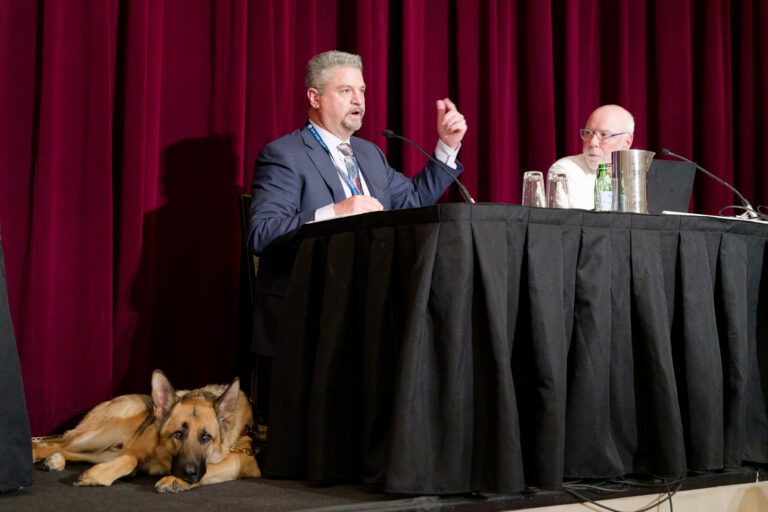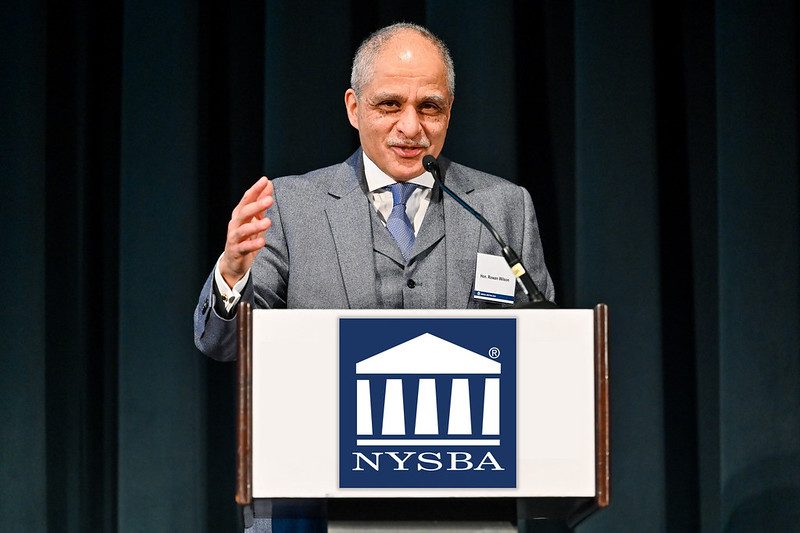How a Service Dog and Two Lawyers Welcome Clients With Disabilities
1.17.2024

Could a person with limited vision access your firm’s website? Could a wheelchair user get inside your law office?
For people with disabilities, navigating legal services can be a challenge. But it does not have to be that way. At a panel hosted by the Elder Law and Special Needs Section at the New York State Bar Association’s Annual Meeting, attorneys Michael Amoruso and Vincent Russo shared how they work to make their practices accessible.
Amoruso, who is hearing-impaired and legally blind, was accompanied by his service dog. “Back when I was growing up, if you were deaf, you were also considered dumb,” he said. “So I had to advocate for myself.”
When Amoruso was in college, he wished to be a golf player. But after finding that his eyesight was deteriorating, he changed his path to becoming a lawyer.
A Bad Day Getting to Court
When Amoruso was traveling to New York City for a hearing, a man at Grand Central Station ran over his cane, snapping it in half. Amoruso got down on his hands and knees, found a wall, and followed that until he reached an area with which he was familiar. He took a taxi to the courthouse, where a security guard helped him get to the hearing, waited for him until it was over, and guided him all the way back to Grand Central Station and to his train.
“I tell you that story not for empathy or sympathy,” Amoruso said. “But if you’re going to be hiring associates, these are the things you need to start considering if you’ve got a disabled attorney or a staff member. Don’t feel sorry for them, you help them succeed.”
Accessible Law Practices
Amoruso and Russo shared some of the many ways they made their offices and practices more accessible for people with disabilities:
- Smartboards in conference rooms so clients can zoom in on text.
- Different kinds of pens – including claw pens – so clients can comfortably sign documents.
- Handrails on the walls to help unstable people walk.
- Chairs with arms so people can lift themselves out of chairs.
- A ramp at the office entrance.
- Only two rooms – a reception and a conference room – so clients go through fewer doors.
- Light, stable furniture that can be easily moved.
- No door thresholds to get in the way of walkers or wheelchairs.
- Sound insulation in rooms to make it easier to hear.
- Valet parking.
- Sloped edges on tables so people leaning on their arms do not get nerve damage.
- Easy-to-clean floors in case of an accident.
- Policies and procedures to accommodate varying disabilities.
“If you serve this community, you need to put a little bit of thought into the client experience,” Amoruso said.
This mindset extends to how the attorneys designed their websites. Amoruso’s website has fewer words, a lot of white space, and a contrasting button to request a consultation – all to make navigation easier. Russo’s website can be customized. One can make the text dyslexia friendly, alter the contrast for people with visual impairments, change the language to Spanish, as well as other adjustments.
“It distinguishes you from the general practitioner who says they’re an Elder Law attorney,” said Russo. “Because you take the steps to make sure that you are accessible to all clients.”






